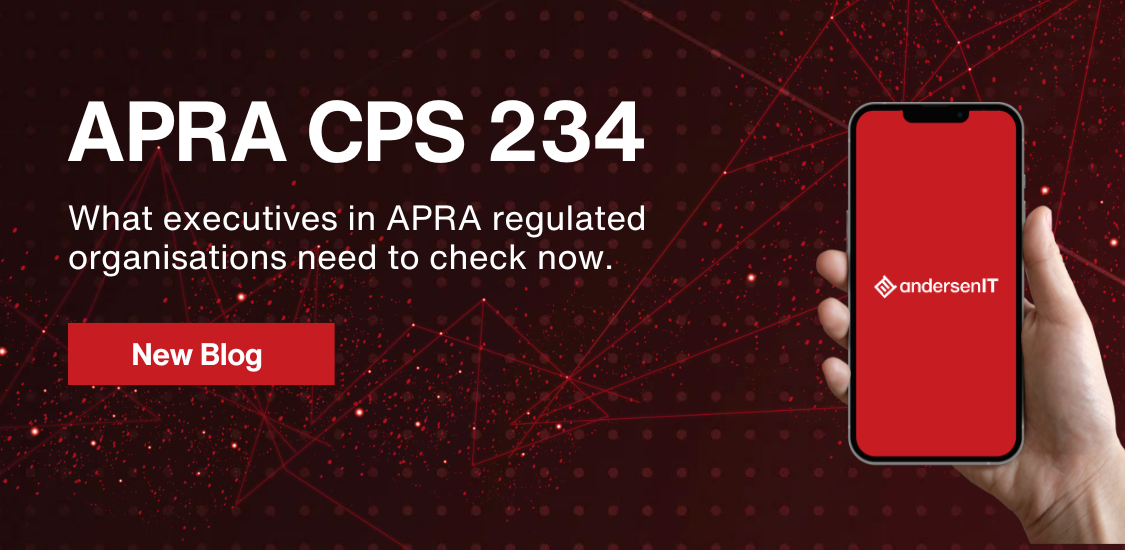Fortinet Fixes Critical FortiNAC RCE Vulnerability
Fortinet has recently addressed critical vulnerabilities in its FortiNAC network access control solution, underscoring the importance of urgent...

For executive teams in APRA-regulated organisations such as banks, insurers, and superannuation funds, cybersecurity oversight is a defined responsibility. APRA requires regulated entities to ensure the protection of sensitive data, enforce structured governance, and maintain operational integrity across all digital environments, including cloud.
Cloud platforms such as Microsoft Azure and AWS enable scale and efficiency, but tenancy design, access controls, and monitoring protocols must be configured with governance in mind. APRA CPS 234 sets a clear standard. It requires that information assets are consistently secured, monitored, and managed in line with defined obligations.
APRA CPS 234 applies to all APRA-regulated entities and covers systems owned and operated by third parties. It outlines a set of information security requirements designed to maintain resilience across critical operations.
Key principles include:
These obligations extend to any environment where business-critical data is processed, including cloud-hosted services, partner systems, and SaaS applications.
A well-designed cloud tenancy can be one of your strongest enablers of compliance. When structured around your business functions and internal governance model, it allows your organisation to maintain clear oversight of access, enforce security policies consistently, and align operations with regulatory frameworks such as APRA CPS 234 and ISO 27001.
Rather than relying on generic configurations, a purpose-built tenancy reflects your organisational structure, separating workloads by function, applying role-based access controls, and supporting data sovereignty requirements.
This structure also supports internal and external reporting, with clear audit trails and accountability pathways. By embedding these controls into the tenancy from the outset, firms strengthen their ability to respond confidently to audits, incidents, or client due diligence requests.
For APRA-regulated organisations, this level of design maturity enables security and compliance to operate in the background, supporting day-to-day productivity while maintaining a defensible, standards-aligned position.
.png?width=302&height=280&name=Finance%204%20(2).png) Cyber insurance providers now assess firms against a defined set of control expectations. These include 24x7 threat monitoring, formal response planning, and evidence of tested security controls. Gaps in these areas often lead to delayed coverage, exclusions, or increased premiums.
Cyber insurance providers now assess firms against a defined set of control expectations. These include 24x7 threat monitoring, formal response planning, and evidence of tested security controls. Gaps in these areas often lead to delayed coverage, exclusions, or increased premiums.
Clients are also reviewing supplier security as part of procurement and contract renewal. Legal, accounting, and advisory firms working with confidential data are expected to maintain consistent safeguards across their digital systems.
Firms with 50–200 staff often operate without dedicated cybersecurity personnel. However, compliance obligations still apply. The following areas should be reviewed at the executive level:
Clear answers to these questions form the foundation of risk-aware governance.
andersenIT helps firms align their cloud environments with regulatory requirements such as APRA CPS 234. Our team works closely with legal, financial, accounting, and advisory organisations to strengthen governance, reinforce accountability, and embed security controls into cloud tenancy structures.
We provide:
Whether you're clarifying responsibilities, reviewing configurations, or preparing for insurer or client assessments, we offer practical support grounded in experience.
1300 ICT AIT (428 248)
.jpg)
Fortinet has recently addressed critical vulnerabilities in its FortiNAC network access control solution, underscoring the importance of urgent...
.jpg)
VMware has released software updates to address several memory corruption vulnerabilities discovered in vCenter Server. These vulnerabilities, if...

"I am completely satisfied with our order from andersenIT. Loren provided me with costing details within an hour of my request and the full process...